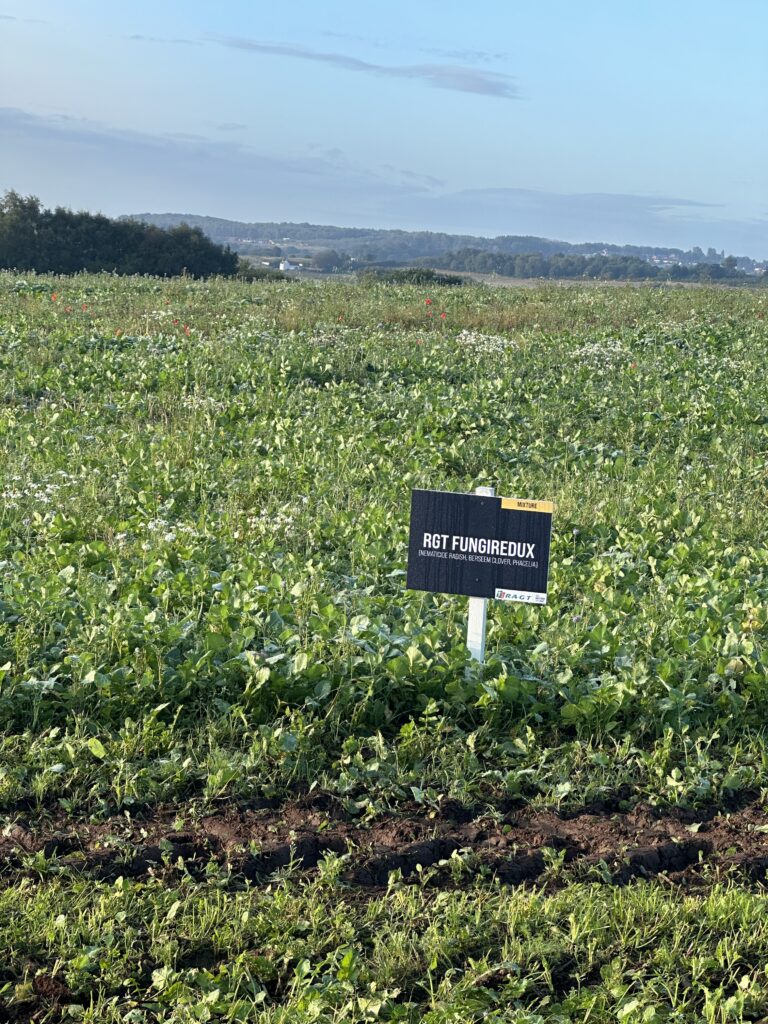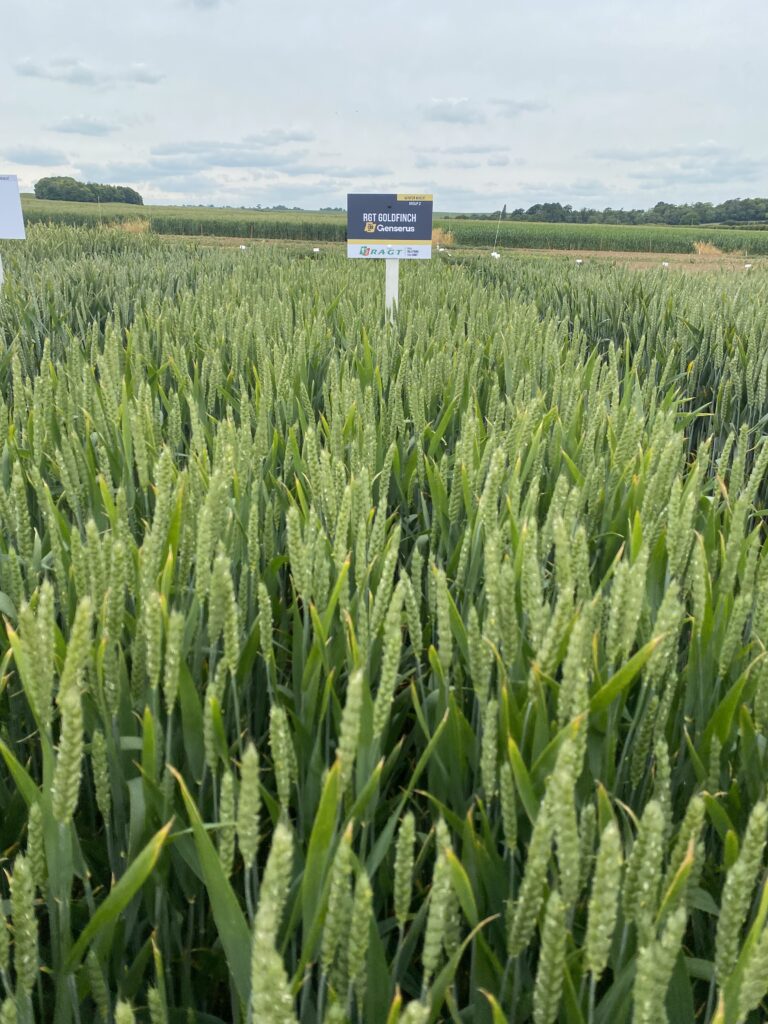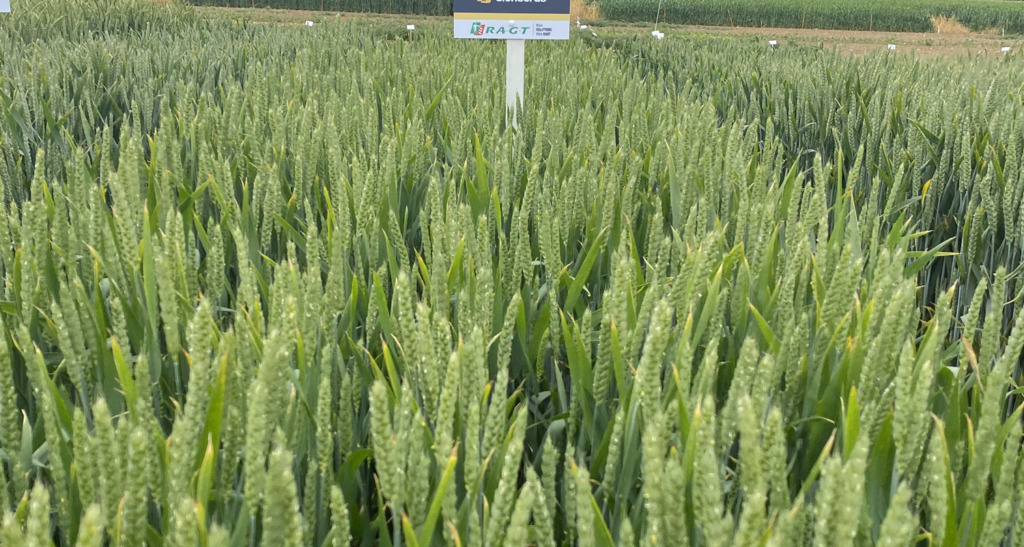Written by Robert Harris for RAGT
Perceived as niche when introduced five years ago, RAGT’s BYDV-resistant wheats are now catching the attention of a significant number of farmers.
Marketed under the Genserus (Genetic Security Virus) brand, these wheats offer season-long control of BYDV, removing the management headaches of autumn aphid control, eliminating the risk of resistance and protecting the environment.
Direct Driller caught up with two growers who tried different varieties last season to see if they lived up to expectations.
Switch to RGT Grouse pays off in Suffolk
After a five-year battle against barley yellow dwarf virus, Michael Gooderham believes he has found a permanent solution by employing genetics rather than unreliable insecticide sprays to control the disease in wheat.
Much of the arable land Michael and son Darren rent at Red House Farm near Eye borders large blocks of woodland and grass, creating a sheltered habitat for aphid vectors of BYDV.
“After the demise of Redigo Deter we really struggled with the disease, so we’ve been under pressure to get everything sprayed,” says Michael. “We saw RGT Grouse advertised as a resistant variety and, after doing our own research at various open days, decided to try some last autumn. It has paid off big time.”
Conventional varieties on the farm received one insecticide spray last autumn, but a second application was shelved after more than 100mm of rain fell in late October. “By late spring, BYDV was evident in our other varieties, particularly in second wheat which suffered badly,” says Michael.
Gleam made up the bulk of second wheat, along with 14ha of feed wheat RGT Grouse, both drilled in early October. Gleam produced a ‘disappointing’ 8.4t/ha, while Grouse yielded 10.3t/ha.

“I was more than pleasantly surprised,” says Michael. “The difference was not entirely down to BYDV, as the Gleam had poorer headlands, but I could see BYDV clearly when spraying at T2 – the flag leaves were discoloured and going purple in places.”
RGT Grouse was also grown as a first wheat after beans, drilled in late September. The 51ha crop averaged 10.8t/ha, edging Dawsum after sugar beet which missed the main aphid migration.
“The variety has done very well as a first and second wheat and we’ve put it into the IPM 4 insecticide-free crop option under SFI, which earns an additional £45/ha,” says Michael. “It certainly looks to be a good fit for our farm.”
RGT Goldfinch delivers the goods in Northants
“A real step forward. Awesome is the only way to describe it.” Northamptonshire grower Andrew Pitts’ first experience with new quality wheat RGT Goldfinch has, to say the least, gone very well.
“Goldfinch is resistant to BYDV and orange wheat blossom midge and it has the best disease resistance profile out there,” he says. “It’s produced high yields and great milling quality, ticking all the boxes in a very difficult year.”
The 40ha seed crop was direct-drilled at the end of September after peas on medium-bodied land at The Grange, Mears Ashby. “It looked good from the outset and tillered prolifically,” says Andrew.
The ground was too wet to travel to apply a T0, so the first PGR application was applied at GS31. Moddus was applied then and at GS32, followed by 1 litre/ha of Terpal at GS37.
“The field is our most lodging-prone field, so this was a tremendous test for the Goldfinch. Of the 100 acres we planted, only one acre on the most exposed slope leaned, but it remained easy to harvest.”
A robust fungicide programme was applied to the pre-basic seed crop – had it been a commercial crop Andrew says he would have only applied a T2 due to the variety’s excellent disease resistance.

The Goldfinch averaged 10.1 t/ha and exceeded full milling specification. “This year especially, that’s a really good performance, particularly the protein at 13.7%. If this isn’t a Group 1 milling wheat I don’t know what is.”
Andrew believes RAGT’s Genserus wheat breeding programme marks a major step forward in wheat production. “I think this trait is critical. If we can have wheats that require no insecticide at all, that is IPM at its absolute best.
“This has been a low-insect year here, yet Goldfinch has still delivered financially. I estimate I’m £60/ha better off in terms of production costs, and it’s hit milling spec across the board with plenty of yield.”





